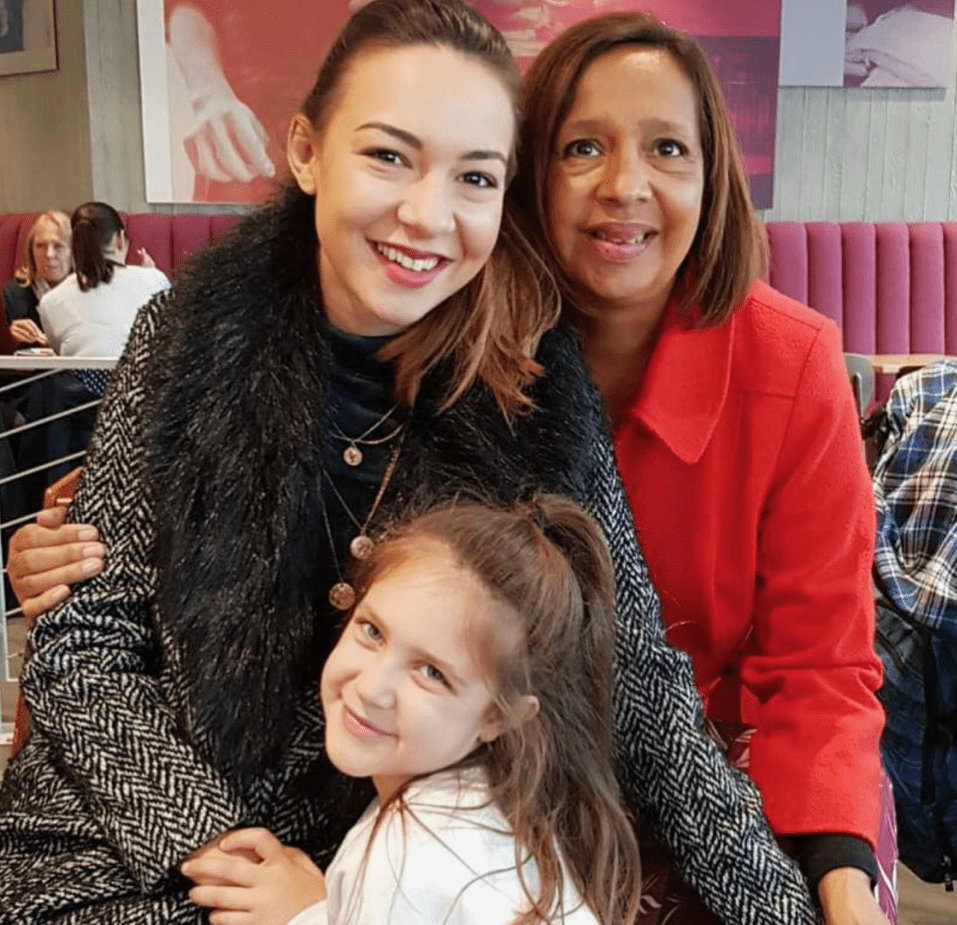How my black mother taught her white-passing granddaughter about race, heritage, and Black history
Grace Holliday on why cultural heritage is more than skin deep…
Esme Grace arrived in 2012. Bright blue eyes under a mop of brown hair, she was a happy, peaceful baby. As is often the case, she became the light of everyone’s life overnight. She was the first child born to my brother Nathan, the first grandchild to our parents, and allowed my sister and I to step into the role of auntie for the first time.
Weekends that had once been an adults-only affair were now spent cooing over her chubby cheeks and defined Cupid’s bow. We marvelled at every tiny detail as we passed her around like a box of M&S biscuits.
Esme began our third generation of mixed-race family members. My white British dad and half-white British, half-Black Caribbean mum had three children – my brother, sister and me.
While Mum has a medium brown skin tone, the melanin seemed to dilute through her three children. Nathan, the eldest, is only slightly lighter in skin tone than Mum. My sister Kate and I, on the other hand, are white-passing. Though we both now have dark hair, as children our ringlets were more blonde than brunette. Meanwhile, Nathan’s eyes aren’t the usually dominant brown; they are green, like our dad’s.
As such, it wasn’t a surprise when Esme – with her white British mum – was born white-passing too. Nobody even thought to comment on it.

Grace with her mother and niece Esme
White nana and brown nana
Three years later, a talking, toddling Esme sat at her grandparents’ table, looking at a book of Disney Princesses. Tiana, she announced in that unabashed way children have, was her least favourite. Mum noticed that of the line-up, Tiana was the only non-white princess. A few days later, a black doll that Mum had bought for Esme was returned to her; it was giving Esme nightmares.
As she rejected the doll, and the princess, she was unknowingly rejecting her beloved ‘brown nana’ too
The exclamation of, ‘Look, a chocolate baby!’ in a coffee shop the year before had alerted us to the fact that she’d become aware of skin colour. Thankfully, she’s adopted more PC terms since then; she referred to her ‘white nana’ (her mum’s mum), and her ‘brown nana’ in conversation occasionally. But as she rejected the doll, and the princess, she was unknowingly rejecting her beloved ‘brown nana’ too.
‘I realised I had to make some conscious changes,’ Mum tells me, when I call her to discuss the topic. ‘She was living in a 99% white village and had no non-white friends. I was one of a small handful of black people in her life.’
Moving around dismay and straight into action, Mum bought a new Disney Princesses colouring book and then headed into the loft to dig out something she hadn’t used in decades.
“She was living in a 99% white village and had no non-white friends. I was one of a small handful of black people in her life.”
When I was a small, white-passing girl myself, Mum had found and brought home a box of ‘People Colour’ crayons. It was no mean feat back then; Crayola launched a ‘Multicultural’ pack in 1992 but it offered just eight colours. It wasn’t until earlier this year that it launched a 24-crayon pack that ‘represents 40 global skin tones’.
Mum had kept them all, aware of their value and the years of use I’d gotten out of them. Presenting the book and crayons to Esme one afternoon, Esme still gravitated towards the light shades. Mum, however, sat by her side, using the brown and black crayons.
‘Look how beautiful she is, Essie,’ Mum would say, as they coloured together.
Where are the non-white role models?
On their subsequent afternoons and weekends together, Mum made a concerted effort to comment on the beauty, intelligence or humour of non-white characters that appeared in Esme’s orbit. When they danced in the kitchen, she was sure to show her the black musicians that made Esme stamp her feet and spin around in circles with glee.
“To not act would have been disrespectful to our ancestors, to our heritage. Doing anything less would have made me feel invisible.”
She sought out children’s TV shows with black leads, and that Christmas, Mum found a black angel for the tree. My dad lifted Esme up on his shoulder to place the angel right at the top, high, high above everyone – and everything – else.
There is no story of seamless, instant success here. The lessons, guidance and patience continued for years; sometimes they seemed to register, other times not. Mum persisted, supported by the rest of the family.
‘To not act, to not have taught Esme these lessons would have been disrespectful to our ancestors, to our heritage. External appearance, or beauty, was never the most important thing. But it was tangible to a small child who can only comprehend the outward and not yet the inward,’ Mum says. ‘Doing anything less would have made me feel invisible. As if I have no bearing on my family. As if I had never belonged here.’
Celebrating her Black heritage
Last year, when Esme was 7, the Eulogy Exhibition came along. It celebrated the lives of the Windrush-era Jamaicans that had settled in Leeds and made significant contributions towards their new city. One of these was Erroll James MBE, my mum’s dad – and Esme’s great-grandad.
A litany of events followed. Esme was invited to a photo shoot for a local newspaper, and a BBC Radio interview. She came to the exhibition’s opening at Leeds Central Library, wearing her best dress. She stood with me, my mum and my mum’s sister Lynne looking into the glass cabinet where my grandad’s portrait, RAF handbook, MBE and other medals were on display. And she listened as people approached us to say hello, to share memories of him, and to praise him. The next day, she took one of his medals into her school for Show and Tell.
‘The Eulogy Exhibition let Esme see her place in the world,’ Mum tells me. ‘She learnt that despite her skin tone, or the village she’s growing up in, it’s not just a white place. It’s a black place too.’
When I call my mum to ask her about these memories, she tells me that a now 8-year-old Esme’s go-to bedtime book for sleepovers at their house is one I gave her for Christmas. Goodnight Stories for Rebel Girls collates female heroes of all races and cultures, and Esme reads the stories of the black girls just as much as the white girls. Mum reports that the story of the supermodel Alek Wek is her favourite, and that after reading the story about a black musician, Esme sought out and played her music of her own accord.
Understanding the family tree
‘When she gets older, I want to show her the family tree and that she has that proud Black blood in her veins,’ Mum says, ‘I also want to teach her about slavery, so she can understand what the white side of her once did to the black side of her. But those conversations are years away. I’d like her to reach her teens first; she needs a level of comprehension, and I want her to be able to discuss and debate what comes up.’
Esme is no longer my mum’s only grandchild. A fair little sister, Angelica, came along. Mum also now has two grandsons from my sister. Their father is black, and the boys, Lucas and Elliott, have my mum’s skin tone. The Black heritage and link in that little family is very much present. And, thanks to Mum’s tireless work, it is now alive and well in Esme and her sister too.
As we finish our phone call, Mum remembers one more thing. Esme has a new colouring app on the family iPad. The girls have black skin, wide lips, big noses and afro hair. She shows them to Mum once they’re finished, echoing what Mum used to say about her crayoned Princesses years ago.
‘Look Nana,’ Esme will say, ‘look how beautiful she is.’



Leave a comment